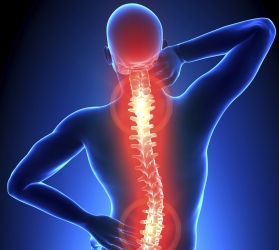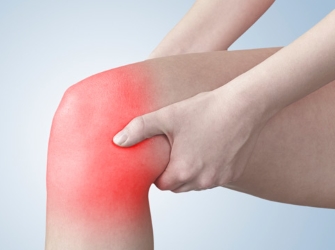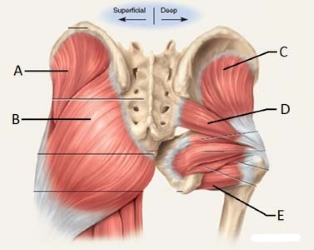If you get pain after horse riding you’re not alone. Whether it’s hip pain, lower back pain, knee pain, inner thigh pain, sore legs or even a sore bum. But it might not be your technique that’s the problem. Horse riding can create muscle problems but it can also make existing ones worse. It doesn’t matter if they originated at work, while mucking out stables, or from poor posture in general, horse riding can exacerbate them. So let’s take a look at a few common reasons for pain after horse riding. As well as what could be causing them and how to treat or even prevent them.
Table Of Contents
Hip Pain After Horse Riding
Hip pain after horse riding is a result of riding position and tight muscles at the top of your leg. Although mainly on the outside of the hip, the discomfort can extend to both the front or back. Regardless of your riding style, the constant shortening of the tensor fascia latae and gluteus medius muscles due to an unnatural position is the primary culprit behind the discomfort. Basically the bigger the horse, the greater the distance between your feet, and the worse it is for your hips. Also, prolonged sitting, particularly with poor posture, compounds the hip strain. Whether this is at a desk, driving or watching TV, your hip muscles are in a shortened position.
Treatment And Prevention
There is little that can be done to alter your riding position but regular stretching of the affected muscles can help to keep them flexible. Unfortunately knowing exactly which muscle is the problem and how to do the appropriate stretch effectively isn’t easy. And sitting all day and riding demands more than just a few minutes of stretching to address bad posture anyway. A deep-tissue sports massage at home from a qualified massage therapist is the best answer.
Lower Back Pain After Horse Riding

Lower back pain after horse riding can, like hip pain, be caused by being seated for long periods. But that doesn’t mean that horse riding isn’t also responsible. If your upright posture comes more from arching your back than correctly engaging your postural muscles then you are causing the muscles of your lower back to become tight. As well as this, your spine isn’t able to act as a shock absorber each time you drop back into the saddle when you ride(1). This can further exacerbate muscle inflammation which can press on your sciatic nerve, leading to sciatica.
Treatment And Prevention
Like hip pain, reducing the amount of time you are sitting down can help lower back pain. If you’re just getting the occasional twinge after riding, stretching your upper thigh, hamstrings and glutes (bum) can help. The goal is to be flexible enough to maintain an upright posture using your core muscles in your abdomen. This probably means you’re going to need to do some core exercises to get them up standard. If you’re not just getting lower back pain after horse riding but find it’s a more chronic issue that affects you throughout the day, massage is the better option. If left untreated it could go on to develop into sciatica or even a slipped disc. And this could keep you out of the saddle for several weeks.
Upper Back Pain After Horse Riding
If you have upper back pain after horse riding the cause is having a slumped posture. This can be while standing, while sitting or while riding. Instead of sitting upright with arms and shoulders relaxed, riding, driving, computer work or even mobile phone use puts your upper back into a more rounded position. Having your arms forward, such as driving or riding, shortens muscles in your shoulders making a proper posture more difficult. This can also lead to neck and shoulder pain after horse riding.
Treatment And Prevention
The first thing to address if you have upper back pain after riding is your general posture. When you’re standing keep your back straight, your shoulders relaxed and your head up. Computer work and mobile phone use means your head is down looking at a screen, weakening you neck muscles. So the same applies when sitting down. Maintain an upright posture which has your spine in its natural, neutral position. Stretching can be of some benefit to easing neck pain, but it is difficult to effectively stretch the upper back or shoulder area. A deep-tissue massage can lengthen and relax the muscles in the upper back and shoulders, making it easier to maintain a correct posture on or off your horse.
Inner Thigh Pain After Horse Riding
Inner thigh pain after horse riding is one issue not directly caused by being in the saddle. Instead this can actually lengthen your adductors and other muscles of your inner thigh. The problem comes, once again, from long periods of sitting or standing, combined with the hard work your inner thigh muscles continuously have to do while you are riding. Although squeezing with your legs might help to keep you in the saddle, it also tightens the muscles. In turn this can affect your hip alignment making a good riding position difficult and go on to cause lower back pain.
Treatment And Prevention
Like hip pain, inner thigh pain after riding comes from being in the saddle with your legs around a horse. No change to your riding technique can help. Instead, regular stretching of your inner thigh muscles, like doing a beginners version of the splits, can help with flexibility. If you’re already getting inner thigh or back pain after riding, you’re going to need some deep-tissue massage first. Relaxing your tight adductors, shortened hips and hip flexors will go a long way to help. It will also ease or prevent associated lower back problems.
Knee Pain After Horse Riding

Knee pain after horse riding generally has 2 main causes depending whether it came on suddenly or gradually over time. If it was sudden, especially after a fall or abrupt movement, it is probably a strain or tear. This could be to a muscle, tendon or ligament and should first be checked out by a doctor to establish severity. If it came on gradually, especially after riding, the cause is more likely to be tight muscles in your leg.
Treatment And Prevention
Where your knee pain is offers a good guide as to which muscles are causing it. If it’s at the front it’s probably your thigh muscles that are tight. The inside your sartorius or hamstrings, the back your hamstrings or calf. While the outside of your knee is most likely to do with a tight IT band. Fortunately, consistent and correct stretching can effectively resolve early-stage tightness in your muscles. But to be sure you’ve identified the right muscles and they are getting sufficient attention, a deep tissue sports massage is the answer.
Sore Bum After Horse Riding

A sore bum after horse riding means you’re getting sore glutes, which is what the buttock muscles are called. The main muscle of the glutes is the gluteus maximus, with the gluteus minimus and medius beneath it. Their main job is to help you straighten up after bending forward as if to touch your toes. But lifting your leg out to the side and stabilising your hips is also part of their roles. As with hip pain after horse riding, a sore bum comes from your glute muscles being in a shortened position. As usual, this can also come from sitting down for long periods. Unfortunately the glutes are often are often weak or not working correctly but frequently neglected as a source of lower back and hip pain.
Treatment And Prevention
Tight or weak glute muscles can also get lazy and force your lower back to do all the work instead. Therefore, given the amount of work it’s already getting when riding, proper glute function is important. Stretching can help to keep the gluteus maximus loose but the deeper muscles will probably require some massage work. This is especially likely for horse riding due to the strain placed on them.
Horse riding doesn’t have to be painful, or leave you with aches and pains for several days after. With some deep tissue massage to get you started, regular stretching can keep your muscles loose, relaxed and flexible.
Book A Mobile Massage
If you would like to book a mobile massage in York please contact me on 07713 250352 or email david@massageinyork.co.uk. Includes sports massage, deep tissue massage and Swedish massage. For more information on booking click here

My knees are sore when im riding and I often have to take my feet out of my stirrups and stretch my legs straight, and my back hurts when I bend over.
That definitely sounds like something that a good massage would help relieve!
Hi I had a fall on my knee about 12 wks ago left with fluid and heat and sounding like there is gravel in knee when straightening and bending but since then I had a bad cramp in my thigh so now when I ride the horses I can’t get off because of the pain in the front of my thigh could this be because of the knee injury or something else thank you
This sounds like something that was an issue before you had your fall, but the knee injury has made things worse. The pain in your thigh is probably due to tight muscles from horse riding, which would also explain your cramp. Stretching and of course a good massage would help you!
Hi, I’ve been experiencing hip pain for several years now. Took a break from riding to have a family and returned to the saddle about 3yrs ago. Been around horses since I was a child. I’m not a regular rider now, preferring groundwork. The pain lately started getting worse, radiating to my knee and shin area. I’m on anti-inflammatories but looking for ways to help ease the pain (yoga/swimming). Would massage help? Or does this sound like something more serious? Thank you, I did find this article very informative. Kate
Hi, Kate. It sounds like you’re getting sciatic pain caused by your hip impinging the nerve, which is why the pain radiates to your knee and shin. Yoga and stretching in general could help, as will massage to the hip area. Also avoid sitting for too long, especially if you have a tendency to tuck your legs under you or sit with legs crossed.
Hope this helps. David
Hello! I’ve recently started riding again after five years of not being in the saddle. My instructor put me on a horse with known bucking problems (I was only told once the lesson began that this horse bucks), so I had to deal with intense bucking and kicking for an hour while being out of practice on horseback. The joints where leg meets hip are in immense pain, I can barely walk straight. Could it be because of the bucking, or am I just unfit? What can I do to fix it?
Assuming you haven’t got hip joint issues the issue is most likely to be your gluteus medius or TFL muscles which sound as if they are tight and not as strong as they were since you had a 5-year break from riding. Having massage on these areas and then working to strengthen them should solve things for you. David
My daughter has immense knee pain and shin pain after riding (which has now progressed to during riding). The knee pain is at the front under the knee cap and the shin pain runs all the way down from the knee to the ankle and the pain is predominantly either side of the shin diapering across the top of the shin.
The pain is reduced with slightly longer stirrups.
Should read dispersing not diapering ♀️
Hi, Rebecca. It sounds like your daughter has very tight anterior tibialis muscles in her shins and that’s what it causing her pain. This is very common in horse riders due to the position of feet in stirrups. The knee pain could be caused by a couple of things but most commonly it’s due to tight hips (glutimus medius) and hamstrings, again caused by the riding position. This can also exacerbate tight IT bands which can also cause knee pain. Without seeing your daughter I can’t be more precise but that’s usually the cause.
I hope this helps.
David.
David, the muscles on the inside of each shin ache hugely in the morning time and can hurt when I am horse riding. My left leg in particular is sore to the touch. What can I do to remedy this. I have been riding for years .
Hi, Victoria. It sounds like tight calves, which is worse on the inside due to the position stirrups put your legs and feet into. Massage to the calves would loosen them up and you could then maintain this with regular stretching.
David.
I started riding again after 40 years out of the saddle. I did several rides before doing a 10 mile fun ride a week ago, but still in pain, we were trotting, cantering and galloping. The pain is mostly in my right side by my kidneys/lungs, during the day it’s not too bad because im walking alot. It hurts if i sit down too long and at night though I have the most pain. A shooting pain when I go to get up. So painful and not experienced before. I have been taking ibrufen and paracetamol, but it’s not helping. Heat seems to help. Is there anything else I can do to get me fitter for the next ride in a week. Thanks
I started horse riding a week ago and on my third lesson where I started trotting on the last minute when I landed on the saddle my mid to upper back started hurting, now every time I trot my back starts hurting.